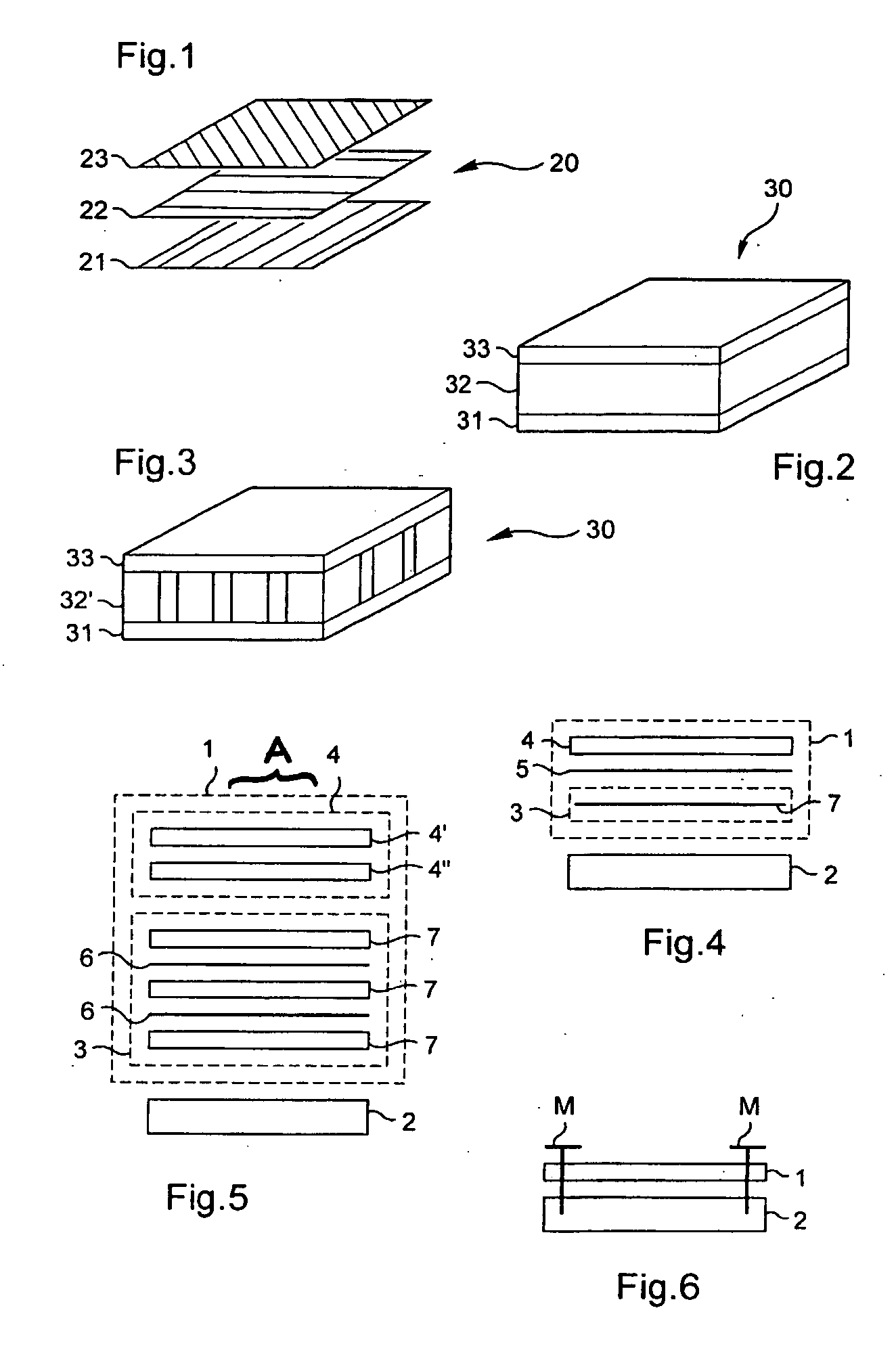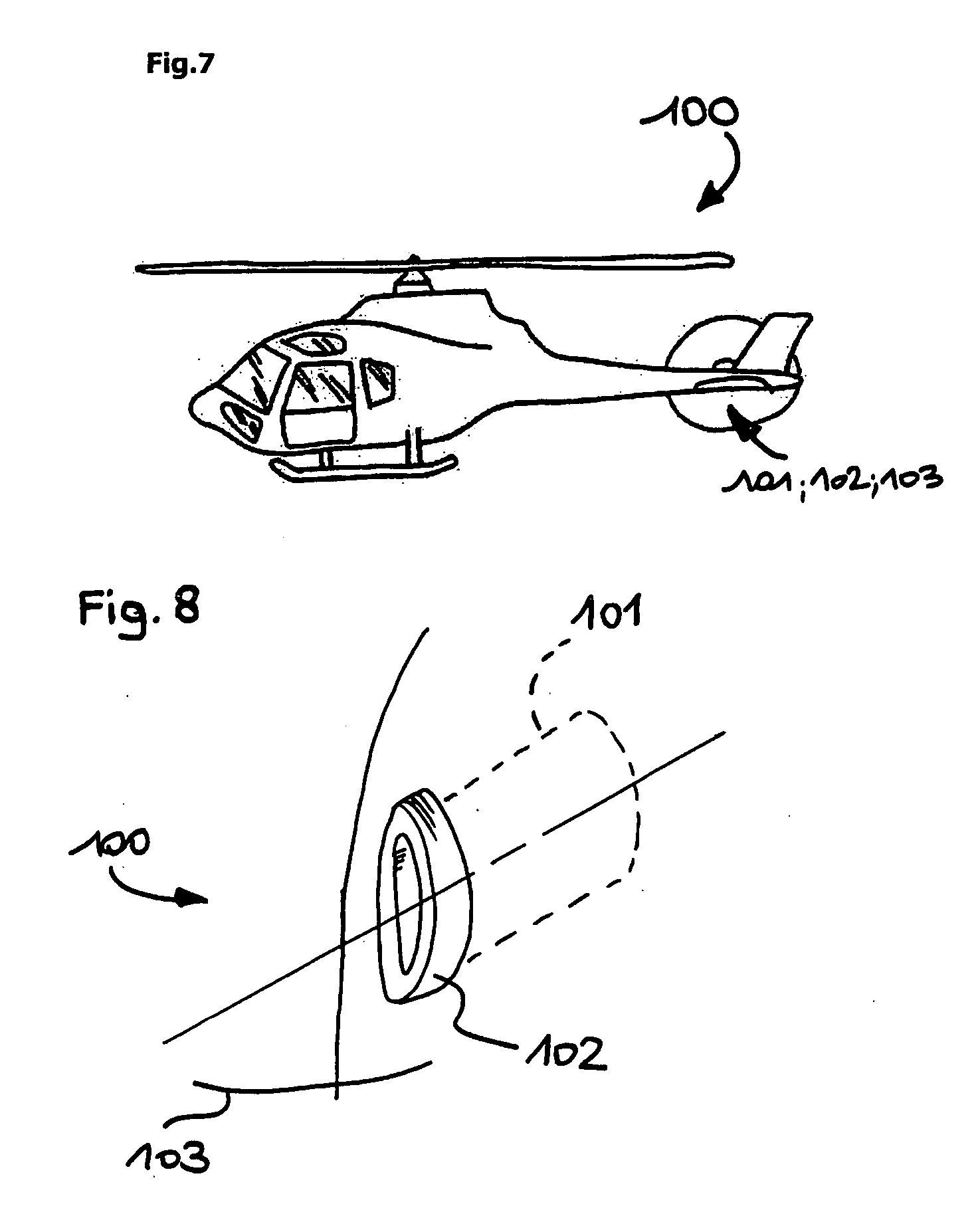Composite protection for revealing damage to a core in a vehicle such as an aircraft
a technology for aircraft and cores, applied in aircraft indicators, air transport, vibration dampers, etc., can solve the problems of general sensitiveness of structural assemblies, loss of cohesion between the various, and specific mode of degradation
- Summary
- Abstract
- Description
- Claims
- Application Information
AI Technical Summary
Benefits of technology
Problems solved by technology
Method used
Image
Examples
Embodiment Construction
[0115]FIG. 1 shows a prior art composite structural assembly 20 of monolithic type.
[0116] The assembly 20 is constituted by stacking individual plies comprising textile reinforcement impregnated in an organic matrix. The plies 21, 22, and 23 have respective orientations of 0°, 90°, and 45°.
[0117]FIG. 2 shows a prior art composite structural assembly 30 of the sandwich type.
[0118] The assembly 30 is provided with a foam core 32 disposed between two layers 31 and 33 of textile reinforcement impregnated in an organic matrix.
[0119]FIG. 3 shows a prior art composite structural assembly 30 of the sandwich type, but in this case it has a honeycomb core 32′, i.e. a core having hollow cells.
[0120] The honeycomb core 32′ is disposed between two layers 31, 33 of textile reinforcement impregnated in an organic matrix.
[0121]FIG. 4 is a section through a structural assembly having a main core 2.
[0122] It is appropriate to recall at this point that such a main core 2 is subjected to static ...
PUM
| Property | Measurement | Unit |
|---|---|---|
| temperature | aaaaa | aaaaa |
| elastomeric | aaaaa | aaaaa |
| energy | aaaaa | aaaaa |
Abstract
Description
Claims
Application Information
 Login to View More
Login to View More - R&D
- Intellectual Property
- Life Sciences
- Materials
- Tech Scout
- Unparalleled Data Quality
- Higher Quality Content
- 60% Fewer Hallucinations
Browse by: Latest US Patents, China's latest patents, Technical Efficacy Thesaurus, Application Domain, Technology Topic, Popular Technical Reports.
© 2025 PatSnap. All rights reserved.Legal|Privacy policy|Modern Slavery Act Transparency Statement|Sitemap|About US| Contact US: help@patsnap.com



